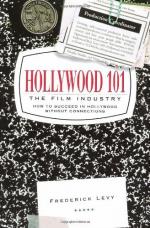|
This section contains 933 words (approx. 4 pages at 300 words per page) |

|
We do not create the types of entertainment, we merely present them.
People see . . . a reflection of their own average thoughts and attitudes.
If the reflection is much lower or ouch higher than their own plane
they reject it. [People] influence pictures far more than pictures influence
people.
IRVING THALBERG, REMARKS BEFORE THE AMPP, 1930
Talking cinema became the new norm for Hollywood because the great majority of moviegoers accepted, perhaps even demanded, it. The wave of enthusiasm in 1928 and 1929 stimulated studio and theater conversion, and the drop in paid admissions beginning in 1930 underscored the necessity for the industry to consolidate, standardize, and retain the "masses". Parts 1 and 2 demonstrated that, by 1931, sound had reached a technical plateau in the sense that audiences would not be aware of any improvements or breakthroughs for more than a decade. Sound-film style had been nudged by critics toward the...
|
This section contains 933 words (approx. 4 pages at 300 words per page) |

|


